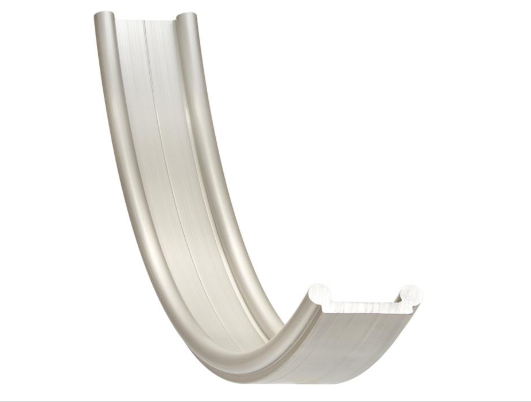What are curved rails, and when are they used?
Ingo Urbach | 30. April 2020
The travel of single-axis motion systems is typically either rotary (in an arc or circle) or linear (a straight line).
But some applications need a system that combines straight movement sections with curved ones.
There are two types of curved systems. There are simple sections with constant radii. These are 90 or 180-degree curves with straight sections or variable-radii sections combined with straight sections. The first variant often occurs when parts need to be moved along a line that is generally straight, but with a few detours to avoid obstacles.
Applications in which obstacles make variable-radii movements necessary include: the positioning of monitors or tools on assembly stations, and ergonomic device adjustments for adapting work stations to a wide range of operators and applications.

Linear carriage
One of the challenges is finding the correct carriage. It must be able to function in both curved and straight sections. The transitions between straight and curved sections are especially critical. That is why many systems use rollers or wheels for guidance and load distribution. This procedure is used primarily because rollers and wheels lack the precise running surfaces of such elements as recirculating bearings. In addition, roller carriages can be adjusted to increase pretension and rigidity.
Rollers are also better able to withstand dirt and moisture.
Plain bearings are increasingly being used in curved-rail systems and, because they are relatively easy to manufacture, special designs can be delivered. That makes them the “ace in the hole” when things have to get complicated. The nature of plain bearings is to align themselves, automatically minimising wear caused by curved sections.
Recirculating bearings, on the other hand, are well-suited only to curves with large radii. Although they can work in systems with curved rails and linear rails, they tend to be sensitive at transitions. This can cause damage to rolling elements and seals. If the load capacity is great, they are still the best option, since their rigidity and running precision are excellent.
Linear drive
The most common are belt and chain drives. This is because they can travel curves with constant or variable radii and anchor multiple carriages in one system at the same time.
Do you have questions about curved rails?
Our experts will be happy to assist you, without obligation, or you can visit our online shop for curved rails:

